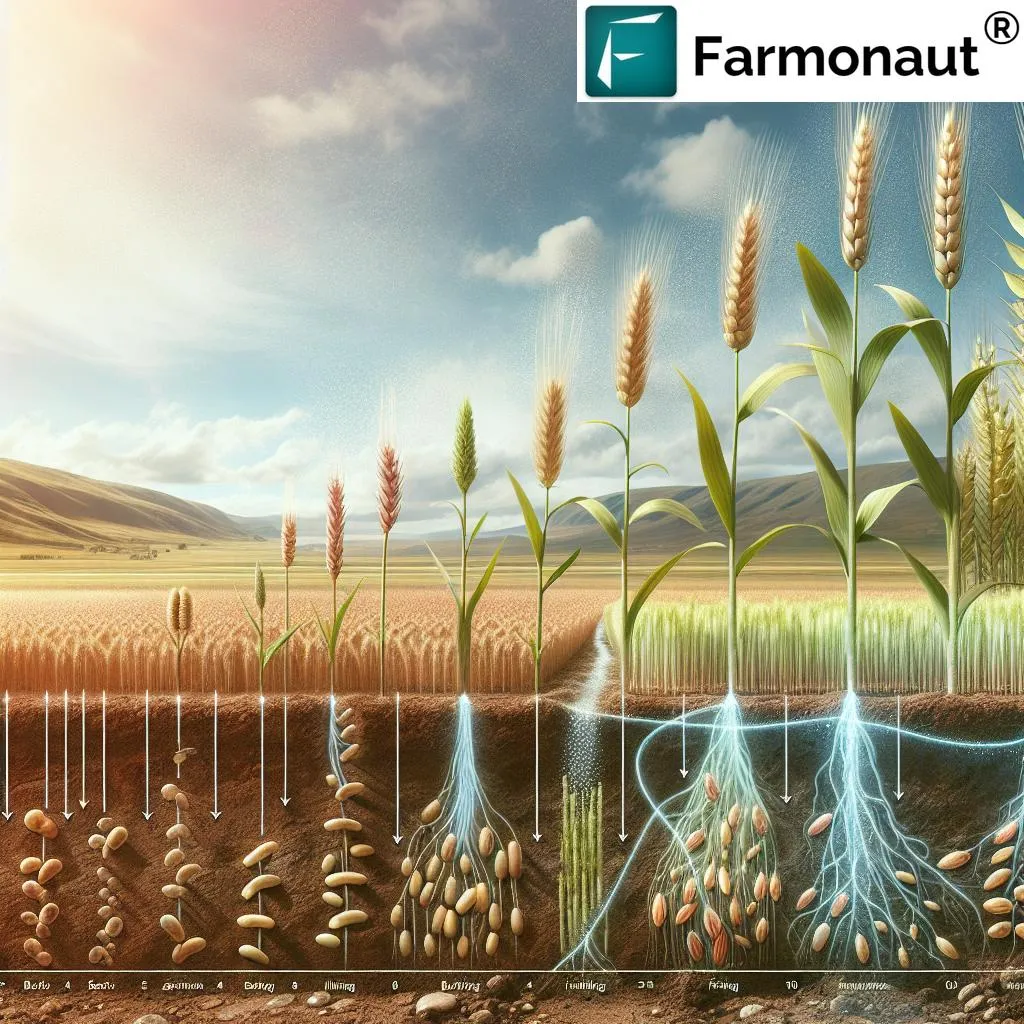In the world of vertical farming and space agriculture, where controlled environments offer unprecedented opportunities, a recent study published in *Frontiers in Plant Science* (translated as *Frontiers in Plant Research*) sheds new light on how light-dark cycles can influence wheat growth and productivity. The research, led by Helena Clauw from the Laboratory of Plant Ecology at Ghent University in Belgium, explores the impact of a 6-hour light-dark cycle on spring wheat during its critical stem elongation phase, with implications that could reshape energy management strategies in the agricultural sector.
The study builds on previous findings that showed accelerated heading in spring wheat under a 6-hour light-dark cycle. However, Clauw and her team wanted to delve deeper into the pre-anthesis development, particularly the stem elongation phase, which is crucial for yield determination. They also examined the effects of transitioning to a more conventional 14-hour light-10-hour dark cycle at the heading stage, mimicking natural spring conditions.
The findings are intriguing. “We observed a significant decline in SPAD values, which indicate leaf greenness, during the stem elongation phase under the 6-hour light-dark cycle,” Clauw explains. This decline led to reduced photosynthetic rates, a critical factor in plant growth and yield. The researchers found that nitrate accumulation in the leaves was a key contributor to this phenomenon. Interestingly, when the plants were shifted to a 14-hour light-10-hour dark cycle at heading, SPAD values increased, coinciding with higher photosynthetic rates.
The implications for the energy sector are substantial. Vertical farming and space agriculture often rely on artificial lighting, which can be costly, especially during peak electricity hours. By optimizing light-dark cycles to align with off-peak electricity prices, farmers can potentially reduce energy costs and maximize profitability. “Our study underscores the importance of tailoring photoperiod regimes to specific developmental stages of the plant,” Clauw notes. “This could lead to more efficient and cost-effective farming practices in controlled environments.”
The research also highlights the need for further exploration into how different light-dark cycles and environmental conditions can influence plant growth and productivity. As the world moves towards more sustainable and efficient agricultural practices, understanding these nuances becomes increasingly important.
Clauw’s work not only advances our knowledge of wheat development but also opens up new avenues for innovation in the energy sector. By optimizing light cycles, farmers can reduce energy consumption, lower costs, and potentially increase yields. This study is a step towards a more sustainable and efficient future for agriculture, where technology and biology converge to create innovative solutions.
As the agricultural industry continues to evolve, research like this will be crucial in shaping the future of farming. The findings from Clauw’s study published in *Frontiers in Plant Science* provide a compelling case for the importance of photoperiod optimization in controlled environments, offering a glimpse into the potential of this approach to revolutionize the way we grow crops.

